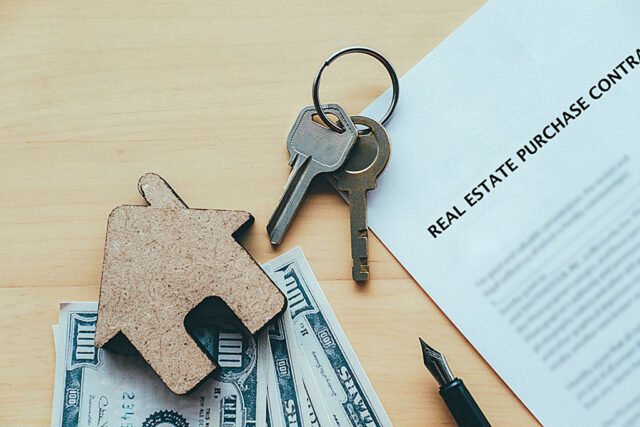
Investing in rental properties is one of the most reliable ways to generate passive income and build long-term wealth. However, not every property guarantees success. Conducting a thorough investment property analysis ensures that your venture is profitable and sustainable.
This article will guide you through how to analyze rental property investments and maximize returns.
Understanding Rental Property Investment Strategies
Before diving into the numbers, it’s essential to choose the right rental property investment strategies. Investors typically opt for one of the following:
- Buy and Hold Strategy – Purchasing a property and renting it out for long-term appreciation and cash flow.
- Fix and Rent Strategy – Buying a property that requires renovations, upgrading it, and renting it for higher income.
- Short-Term Rentals – Leasing out properties on platforms like Airbnb to generate higher returns in shorter periods.
- Multi-Family Investments – Investing in duplexes, triplexes, or apartment buildings to diversify rental income sources.
Selecting the right strategy depends on your financial goals, risk tolerance, and market conditions.
Key Factors in Investment Property Analysis
Analyzing rental properties for profitability involves multiple factors. Each aspect contributes to the overall viability of the investment.
1. Location and Market Research
The location of a rental property significantly impacts its profitability. When evaluating an area, consider:
- Demand and Supply – Research the demand for rentals and vacancy rates.
- Neighborhood Quality – A safe and thriving neighborhood attracts long-term tenants.
- Employment and Economy – Areas with job growth and economic stability have higher rental demand.
- Amenities and Schools – Proximity to public transport, shopping centers, and schools increases desirability.
Conducting thorough market research prevents investing in a declining area with limited tenant interest.
2. Cash Flow Analysis
Cash flow is the net profit generated from rental income after all expenses are deducted. A positive cash flow means the property earns more than it costs to maintain.
How to Calculate Cash Flow:
- Determine gross rental income (monthly rent received).
- Subtract operating expenses, including:
- Mortgage payments
- Property taxes
- Insurance
- Maintenance costs
- Property management fees
- Vacancy allowance
- The remaining amount is your net cash flow.
A property with consistent positive cash flow is a strong investment.
3. Cap Rate Analysis
The capitalization rate (cap rate) measures a property’s return on investment based on net operating income (NOI) and purchase price.
Formula:
Cap Rate = (Net Operating Income / Purchase Price) × 100
For example, if a property generates $12,000 in NOI annually and costs $200,000, the cap rate is:
(12,000 / 200,000) × 100 = 6%
A good cap rate typically ranges from 5% to 10%, depending on the location and risk factors.
4. Cash-on-Cash Return
Cash-on-cash return determines how much profit you make compared to the cash you invested.
Formula:
Cash-on-Cash Return = (Annual Cash Flow / Total Cash Invested) × 100
For instance, if your initial investment was $40,000 and your yearly cash flow is $4,000, your return is:
(4,000 / 40,000) × 100 = 10%
A higher percentage indicates a stronger return on your initial investment.
5. The 1% Rule for Rental Properties
The 1% rule is a quick method to screen potential properties. It states that a rental property should generate at least 1% of its purchase price in monthly rent.
Example:
- Property Price: $200,000
- Expected Rent: $2,000 per month (1% of purchase price)
If the rental income falls below 1%, the property may not be a profitable investment.
6. Debt-to-Income Ratio
Investors should evaluate their debt-to-income ratio to ensure they can manage additional financial obligations. Lenders typically prefer a ratio below 36% for loan approvals.
7. Vacancy and Tenant Risks
Vacancy rates can impact cash flow. To minimize risks:
- Screen tenants thoroughly to ensure reliable rental payments.
- Offer competitive rental rates to attract tenants faster.
- Invest in properties with strong rental demand.
How to Analyze Rental Property Investments Effectively
To make a well-informed decision, follow these steps:
- Run a Market Analysis – Compare similar rental properties in the area.
- Calculate Expected Returns – Use cash flow, cap rate, and cash-on-cash return formulas.
- Account for Unexpected Costs – Factor in potential repairs, vacancies, and legal expenses.
- Use Online Tools – Platforms like Zillow, Rentometer, and Mashvisor help estimate rental income and property values.
- Consult Experts – Work with real estate agents, property managers, and financial advisors for insights.
Final Thoughts
Analyzing rental properties for profitability requires thorough research, calculations, and strategic planning. By understanding rental property investment strategies and applying sound investment property analysis techniques, you can make smarter decisions and maximize your returns. Whether you’re a new investor or an experienced one, consistent evaluation and market awareness will ensure long-term success in rental property investments.






Leave a Reply
You must be logged in to post a comment.